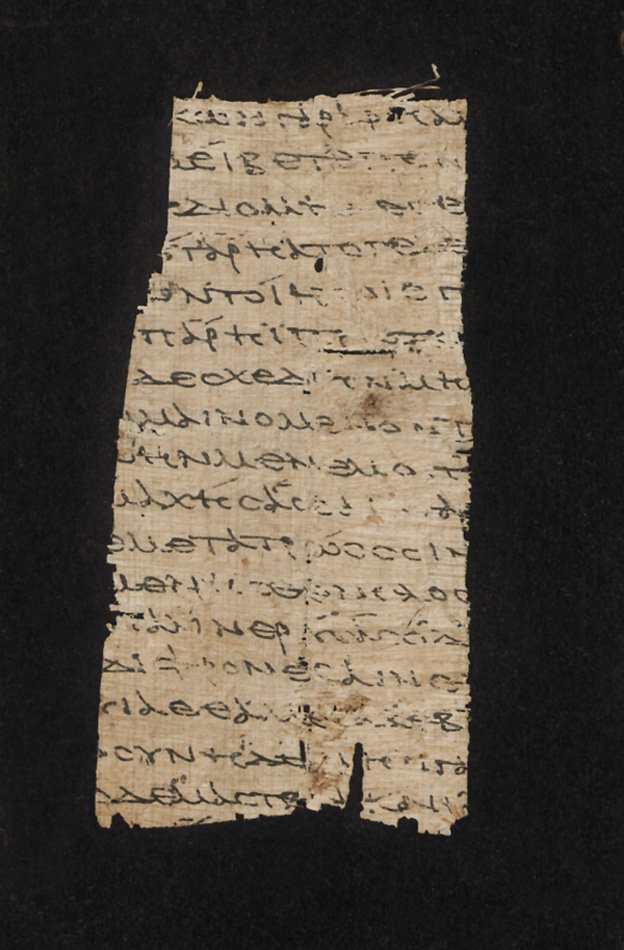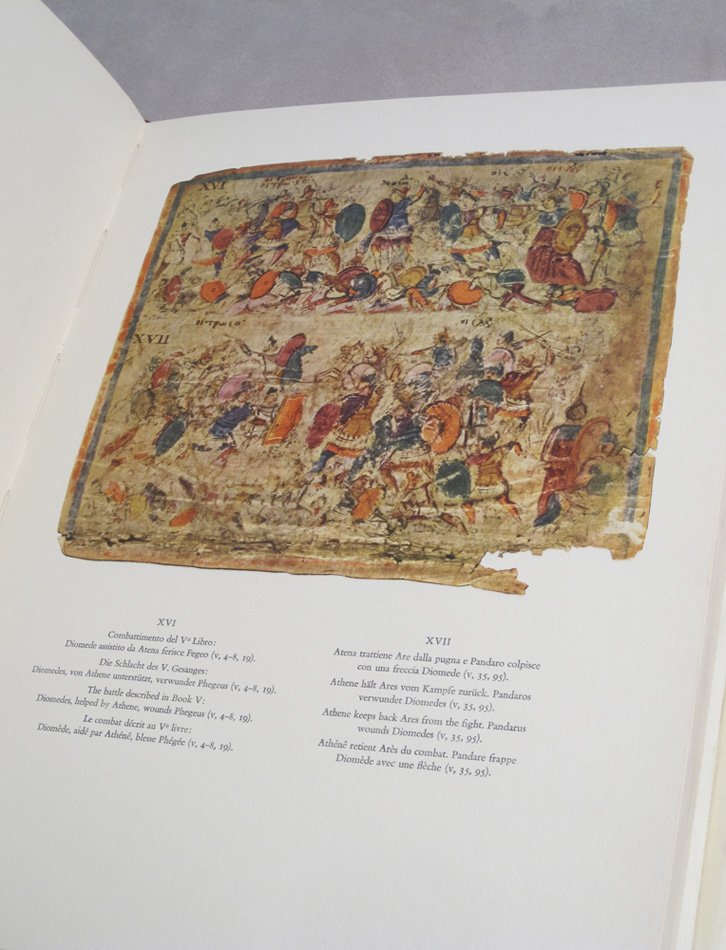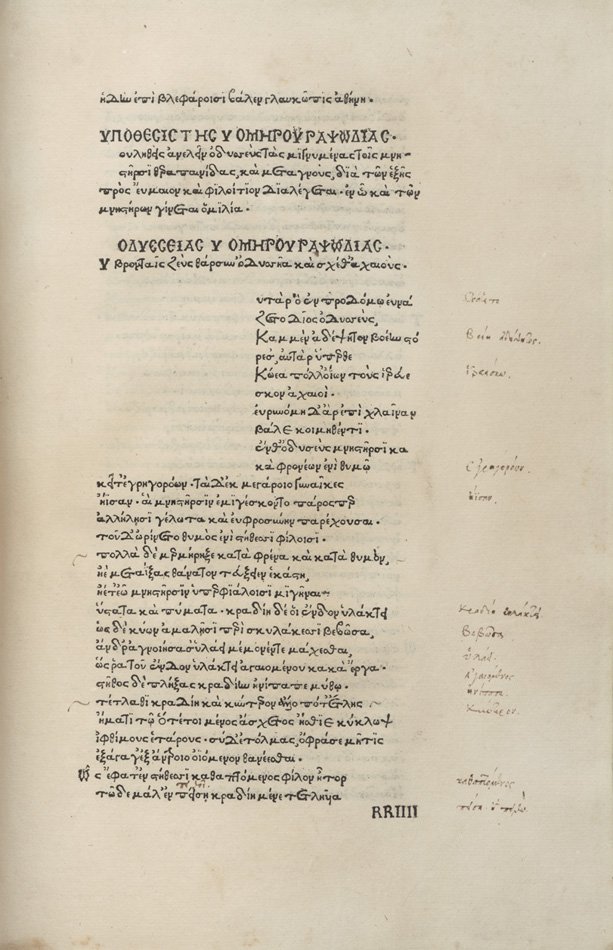Homer Before Print
Works from antiquity had to undergo several risky transformations in order to be read and studied today. The texts—written on papyrus or parchment, and later on paper—were copied by scribes multiple times over the course of two millennia. The long journey from manuscript to printed book resulted in numerous losses and the introduction of many variations in the texts along the way, some accidental and others deliberate.
The Iliad and the Odyssey—epic poems composed for oral performance—present these and other challenges to scholars who are interested in the history of the texts that are available to us. The two poems are generally presumed to have been composed sometime from the eighth century BCE (or earlier) to the mid-seventh century BCE and written down by the mid-sixth century BCE, likely in conjunction with performances at the Panathenaia Festival in Athens. The earliest surviving example of Homeric papyri is from the third century BCE, about the time that scholars in Alexandria produced a relatively stable text that was subsequently used by scribes to produce copies. Over 1,000 manuscripts of Homer's works exist, far more than for any other ancient author and many more of the Iliad than theOdyssey.
About 300 medieval manuscripts of the Iliad or the Odyssey survive dating from the ninth to the fifteenth century. Interest in the Homeric texts flourished in the East, where Byzantine manuscripts produced between the twelfth century and the fall of Constantinople in the mid-fifteenth century preserve important scholarship. Differences in the ancient versions copied by medieval scribes, combined with their own transcription errors and editorial decisions, make it very difficult to sort out relationships among the manuscript texts. In the West, where there was almost no knowledge of Greek, scholars and others had to rely for familiarity with the epics on the Ilias Latina, an abridgement in Latin of Homer's Iliad, and other accounts of the Trojan War with dubious authenticity.
With the invention of printing in the mid-fifteenth century, the transmission of the Homeric texts entered a new phase: editors could choose to work from manuscripts (if they had access to them) or one or more previously printed editions. Despite the apparent stability and fixity of print, Homer in Print chronicles the enduring debate about which text is closest to the "real" Homer—or, at least, the "best."
Ilias Ambrosiana, Cod. F. 205 P. inf., Bibliothecae Ambrosianae Mediolanensi
Berna: In aedibus Urs Graf, 1953.
The first facsimile edition of the Ilias Ambrosiana, a late fifth- or early sixth-century CE manuscript of the Iliad thought to have been produced in Constantinople and named for the Bibliotheca Ambrosiana in Milan where it is housed. It is the only surviving portion of an illustrated copy of Homer from antiquity. All of the surviving text is written on the verso of the illustrations. The existing fragments are from books 1–2, 4–17, and 21–24. The original manuscript likely had approximately 380–390 leaves and about 240 illustrations.
BHL E1
'H τοῦ 'Oμήρου ποίησις ἅπασα
Florence: Bernardus Nerlius, Nerius Nerlius, and Demetrius Damilas, 1488.
The first printed edition of Homer, this is also one of the earliest printed editions of any ancient Greek author. The edition was edited by Chalcondylas, a key figure in the transmission of Greek to Renaissance Italy, and funded by two Florentine brothers, Bernardo and Nerio Nerli. Bernardo explains in the preface that the lack of books has proved troublesome for students of Greek literature and he decided to address the problem by publishing a Greek text. Bernardo does not identify the manuscripts used by Chalcondylas, but he mentions that the editor consulted the twelfth-century commentary of Eustathius, This copy is incomplete and includes 192 leaves, a little less than half of the total.
BHL A1



